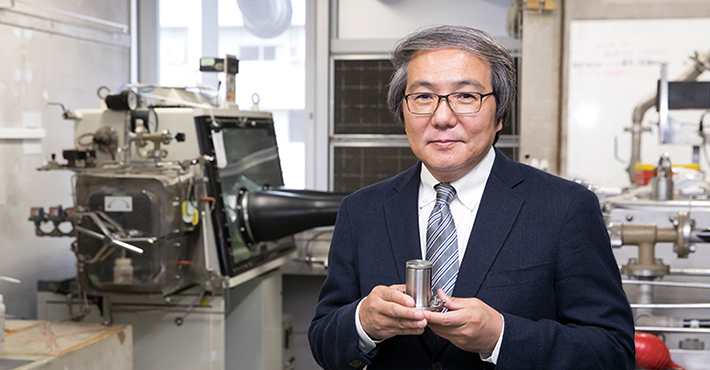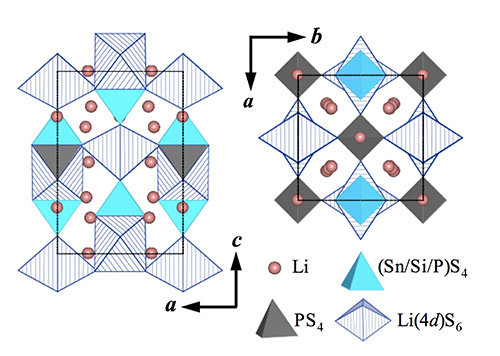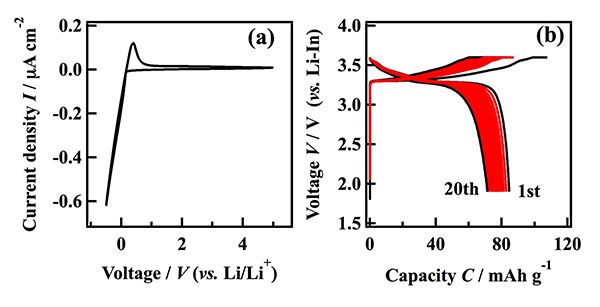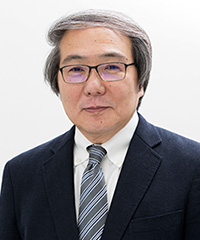Researchers at Tokyo Institute of Technology have devised a low-cost approach to developing all-solid-state batteries, improving prospects for scaling up the technology for widespread use in electric vehicles, communications and other industrial applications.

Ever since batteries were invented over 200 years ago, there has been a drive to improve quality and performance at reduced costs. Compared to common lithium-ion batteries that contain lithium ion conducting liquids, all-solid-state batteries of the future promise a suite of advantages: improved safety and reliability, higher energy storage and longer life cycles.
The discovery of ‘superionic’ conductors — solid crystals that enable fast movement of ions — is spurring the development of such dream batteries, but promising designs have so far relied on the use of rare metals such as germanium, making them too expensive for large-scale applications.
Ryoji Kanno and colleagues at Tokyo Institute of Technology (Tokyo Tech) have now discovered a new material with a low-cost, scalable approach that involves substituting germanium for two more readily available elements: tin and silicon. The new material achieved an ionic conductivity1 that exceeds that of liquid electrolytes. Reporting their findings in Chemistry of Materials, the team states: "This germanium-free lithium conductor could be a promising candidate as an electrolyte in all-solid-state batteries."
Due to its high chemical stability and ease of fabrication, Kanno says that the new material widens the possibilities of fine-tuning solid electrolytes to meet diverse industry and consumer needs.
In 2011, Kanno and his team, working in collaboration with Toyota Motor Corporation and Japan's High Energy Accelerator Research Organization (KEK), published a landmark paper in Nature Materials that introduced a solid electrolyte with the structure Li10GeP2S12 (LGPS). This material became an important forerunner in the race to develop viable all-solid-state batteries. It exhibited an ionic conductivity of 1.2x10-2S cm-1 at room temperature, a level comparable with — and even exceeding some — liquid electrolytes used in existing batteries.
The team went on to design other solid electrolytes based on the same LGPS crystal structure, with promising results. (See Solid electrolytes open doors to solid-state batteries.)
In their latest study, the researchers kept the same framework structure of LGPS, and finely adjusted the ratio and positioning of the tin, silicon and other constituent atoms. The resulting material LSSPS (composition: Li10.35[Sn0.27Si1.08]P1.65S12 (Li3.45[Sn0.09Si0.36]P0.55S4)) achieved an ionic conductivity of 1.1x10-2S cm-1 at room temperature, almost reaching that of the original LGPS structure.
Although further work will be required to optimise performance for different usage purposes, the new material raises hopes for low-cost production without sacrificing performance.
Kanno envisions that in addition to meeting current battery needs across all sectors, all-solid-state batteries will expand the possibilities of responding to new user needs arising from the Internet of Things (IoT) and the shift towards smart systems, as well as powering robots, drones and space and aircraft technologies among others in future.

Figure 1. The atomic arrangement of the new material named LSSPS
Two representations of the new germanium-free material with the structure Li10.35[Sn0.27Si1.08]P1.65S12 (Li3.45[Sn0.09Si0.36]P0.55S4).

Figure 2. Cyclic voltammogram and charge-discharge curves
The material exhibits high stability and cycling ability, with good capacity retention during 20 cycles.
Comment from Professor Ryoji Kanno

Professor Ryoji Kanno
All-solid-state batteries with large capacity, high power, short charging time, and various safety advantages show great promise as next-generation batteries. The key to practical application is the discovery of solid electrolytes that exhibit superionic conductivity comparable to that of current liquid batteries.
After years of research, we are now discovering solid electrolyte materials that have excellent properties in response to various practical requirements one after another. I hope that this research result will be of great help in accelerating the practical application of all-solid-state batteries in the future.
Reference
Authors: |
Yulong Suna, Kota Suzukia, b, Satoshi Horib, Masaaki Hirayamaa, b, and Ryoji Kanno a, b * |
Title of original paper: |
Superionic Conductors: Li10+δ[SnySi1-y]1+δP2-δS12 with a Li10GeP2S12-type Structure in the Li3PS4-Li4SnS4-Li4SiS4 Quasi-ternary System |
Journal: |
Chemistry of Materials |
DOI : |
|
Affiliations : |
aDepartment of Electronic Chemistry, Interdisciplinary Graduate School of Science and Engineering, Tokyo Institute of Technology
b Department of Chemical Science and Engineering, School of Materials and Chemical Technology, Tokyo Institute of Technology |
- *
- This article has been updated to correct a typographical error on August 10.
- *
- This article has been updated to include photos and a comment from professor Ryoji Kanno on August 29.
. Any information published on this site will be valid in relation to Science Tokyo.







